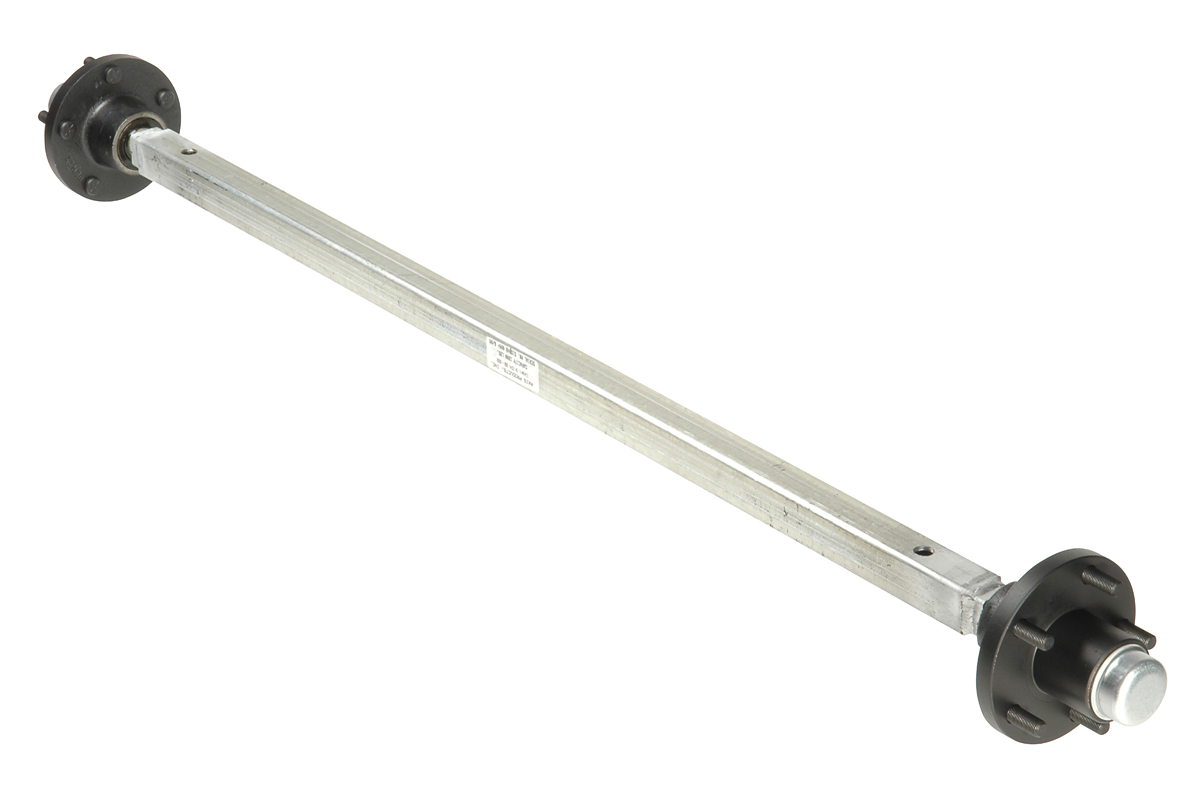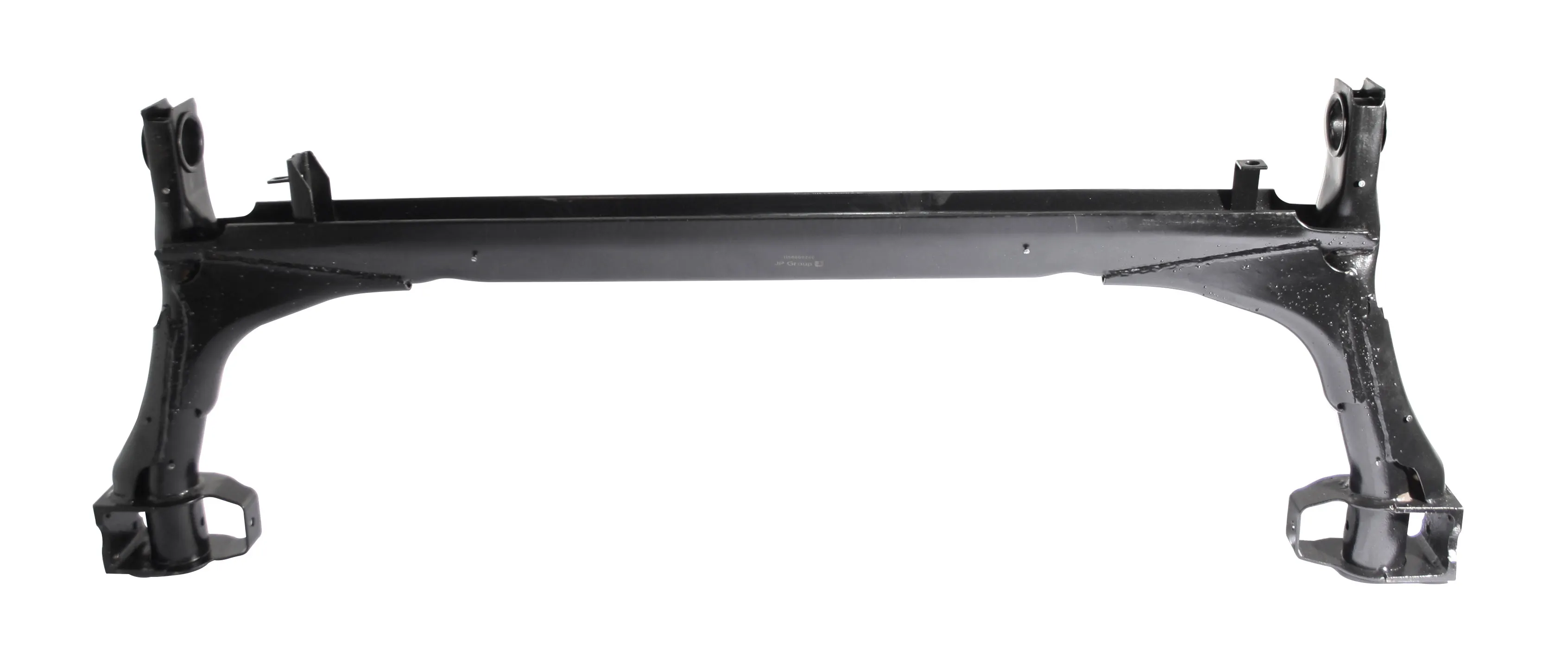Product Description
Semi trailer Axle Catalogue:
Axle – American Type Inboard Series
| Model |
Capacity | Brake | Track | Distance of Spring | Distance of Brake Chamber | Axle tube | Wheel Fixing | Bearing | Total Length | Weight | Recommend wheel | ||
| T | mm | mm | mm | mm | mm | Stud | P.C.D. | C.B.D. | mm | kg | |||
| UTA13RA03B2 | 13 | 420×180 | 1840 | ≥930 | 390 | 127 x19 |
10-M22x1.5 ISO |
335 | 281 | 518445/10 | 2185 | 372 | 7.5-20 |
| UTA13RA03B3 | 13 | 420×2 | |||||||||||
| Add: | Zhudian Industrial Zone, Xihu (West Lake) Dis. District, HangZhou City, ZheJiang Province, China | ||||||||||||
| Web: | uttrailerparts | ||||||||||||
/* January 22, 2571 19:08:37 */!function(){function s(e,r){var a,o={};try{e&&e.split(“,”).forEach(function(e,t){e&&(a=e.match(/(.*?):(.*)$/))&&1
| After-sales Service: | 1 Year |
|---|---|
| Warranty: | 1 Year |
| Type: | Axle |
| Certification: | ISO/TS16949, DOT, ISO |
| Loading Weight: | 13tons |
| ABS: | Without ABS |
| Customization: |
Available
| Customized Request |
|---|

Can you provide examples of classic and vintage vehicles that use beam axles?
Classic and vintage vehicles often featured beam axles in their suspension systems. These axles were widely used in the past and can still be found in iconic automobiles. Here are some examples of classic and vintage vehicles that used beam axles:
1. Ford Model T (1908-1927):
The Ford Model T, also known as the “Tin Lizzie,” is a classic example of an early automobile that used a beam axle. It was one of the first mass-produced cars and played a significant role in making automobiles accessible to the masses. The Model T’s simple and robust suspension design included a beam axle.
2. Willys Jeep (1941-1986):
The Willys Jeep, originally designed for military use during World War II, became an iconic vehicle with civilian versions. Jeeps are known for their off-road capabilities, and many early models featured beam axles in both the front and rear suspensions.
3. Volkswagen Beetle (1938-2003):
The Volkswagen Beetle, often called the “Bug,” is one of the most recognizable and beloved classic cars. Many early models, including the original air-cooled Beetles, used beam axles in the rear suspension. The suspension design contributed to the Beetle’s simple and reliable characteristics.
4. Chevrolet Advance Design Trucks (1947-1955):
Chevrolet’s Advance Design trucks, also known as the “Task Force” trucks, featured beam axles in their suspensions. These trucks were popular for both commercial and civilian use and are considered classic American pickups.
5. Citroën 2CV (1948-1990):
The Citroën 2CV, also known as the “Deux Chevaux,” is a classic French car known for its unconventional design. The 2CV’s suspension included a beam axle in the rear, which contributed to its ability to handle rough roads and challenging conditions.
6. Land Rover Series (1948-1985):
The Land Rover Series, especially the early models, featured beam axles in their suspension systems. Land Rovers are renowned for their off-road capabilities and are often associated with exploration and adventure.
7. Dodge Power Wagon (1945-present):
The Dodge Power Wagon is a classic American pickup truck with a history dating back to World War II. Early models of the Power Wagon used beam axles in the front and rear suspensions, making them capable off-road and workhorse vehicles.
8. Morris Minor (1948-1971):
The Morris Minor is a classic British car with a reputation for practicality and reliability. Many early models of the Morris Minor featured beam axles in their suspensions, contributing to the car’s durability.
Summary:
Classic and vintage vehicles from different parts of the world used beam axles in their suspension systems. These examples showcase the historical significance and enduring appeal of cars and trucks with beam axles, which were celebrated for their simplicity and durability.

Can you explain the impact of beam axles on a vehicle’s ground clearance?
The choice of suspension, including beam axles, can have a significant impact on a vehicle’s ground clearance, which is the distance between the lowest point of the vehicle and the ground. Here’s how beam axles can affect ground clearance:
1. Beam Axles and Ground Clearance:
Beam axles are known for their simplicity and durability, making them a common choice in certain vehicle types. Here’s how they influence ground clearance:
- Raised Chassis: Vehicles equipped with beam axles tend to have a raised chassis because the axle itself, along with its components, is located below the vehicle’s frame. This design provides a good amount of ground clearance, especially in off-road and heavy-duty vehicles.
- Consistent Clearance: Beam axles maintain a relatively consistent ground clearance across the width of the vehicle. This even clearance can be advantageous when traversing uneven terrain, as all wheels have similar clearance levels.
2. Impact on Off-Roading:
Beam axles are favored in off-road vehicles and 4x4s because they offer several advantages for tackling rough terrain:
- Improved Articulation: Beam axles provide excellent wheel articulation, allowing the wheels to move independently, which can keep the tires in contact with the ground even on uneven surfaces.
- Enhanced Durability: Off-road vehicles need to withstand impacts, rocks, and obstacles. Beam axles are less prone to damage in these conditions, contributing to a higher ground clearance.
- Adaptability: Off-road enthusiasts often modify their vehicles with suspension lifts to further increase ground clearance when using beam axles, enabling them to conquer more challenging trails.
3. Passenger Cars and Beam Axles:
Beam axles are less common in passenger cars, where independent suspension systems are preferred for better ride comfort and handling on paved roads. However, some classic and vintage cars may feature beam axles in the rear suspension, affecting their ground clearance and ride characteristics.
4. Balancing Act:
When designing vehicles with beam axles, engineers aim to strike a balance between ground clearance, stability, and load-bearing capacity. The height of the axle, suspension components, and tire size all contribute to the final ground clearance measurement.
Summary:
Beam axles can provide vehicles with good ground clearance, especially in off-road and heavy-duty applications. Their ability to maintain even clearance and handle uneven terrain makes them a practical choice for specific vehicle types. However, the impact of beam axles on ground clearance varies depending on the vehicle’s design, intended use, and modifications made by enthusiasts.

What are the advantages and disadvantages of using a beam axle?
A beam axle, also known as a solid axle or live axle, has its own set of advantages and disadvantages, which can make it suitable or less suitable for various vehicle applications:
Advantages of Using a Beam Axle:
- 1. Durability: Beam axles are known for their robust construction and ability to withstand heavy loads and rough terrain. They are commonly used in applications where durability and strength are paramount, such as in heavy-duty trucks and off-road vehicles.
- 2. Cost-Effective: Beam axles are generally simpler and more cost-effective to manufacture and maintain compared to independent suspension systems. This makes them an economical choice for certain vehicle types.
- 3. Load-Carrying Capacity: Vehicles with beam axles have excellent load-carrying capacity, making them suitable for applications that involve transporting heavy goods or towing trailers.
- 4. Articulation (Off-Road): In off-road and 4×4 vehicles, front and rear beam axles provide exceptional articulation, allowing the wheels to maintain contact with uneven terrain, enhancing off-road performance.
- 5. Simplicity: The design of a beam axle is straightforward and lacks complex components, making it easier to maintain and repair.
Disadvantages of Using a Beam Axle:
- 1. Ride Comfort: Vehicles with beam axles often provide a less comfortable ride, especially on uneven road surfaces, as both wheels on the same axle move together in response to bumps and imperfections.
- 2. Reduced Traction: In off-road or slippery conditions, the lack of independent wheel movement can reduce traction, as one wheel’s loss of grip affects the other on the same axle.
- 3. Handling and Stability: Beam axles may result in less precise handling and stability, particularly in high-speed or cornering situations, compared to vehicles with independent suspension.
- 4. Weight: The solid construction of a beam axle can add weight to the vehicle, which can impact fuel efficiency and overall performance.
- 5. Limited Applications: Beam axles are less versatile and are typically used in specific applications, such as rear axles in trucks, off-road vehicles, and some industrial vehicles. They are less common in modern passenger cars due to their limitations in ride comfort and handling.
The choice of whether to use a beam axle or independent suspension depends on the intended use of the vehicle and the trade-offs between durability, load-carrying capacity, ride comfort, and handling characteristics.


editor by CX 2024-03-29